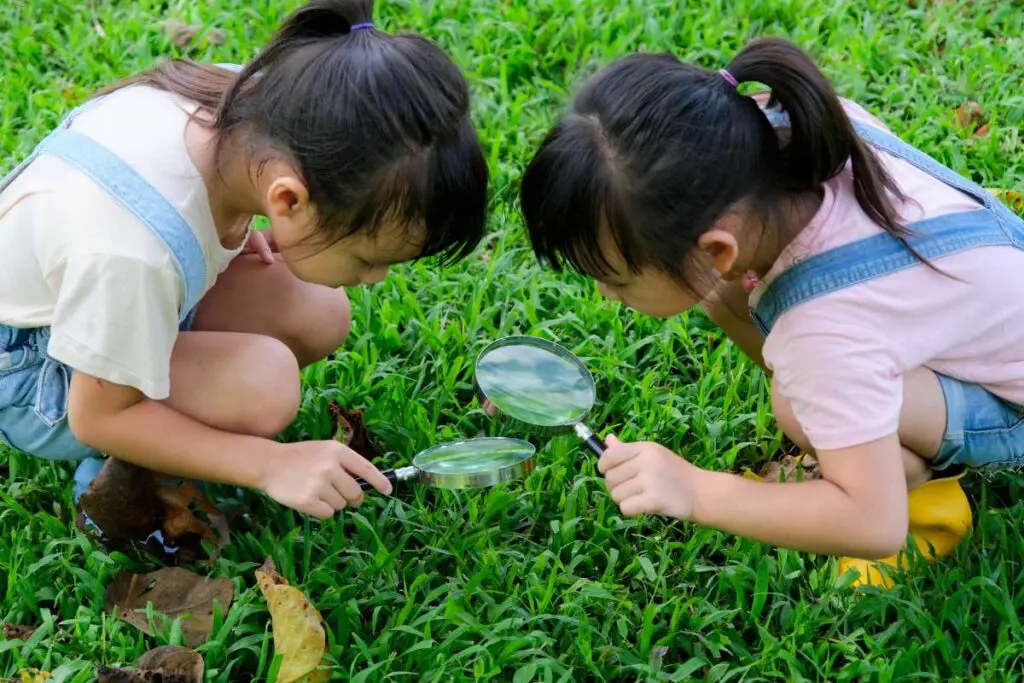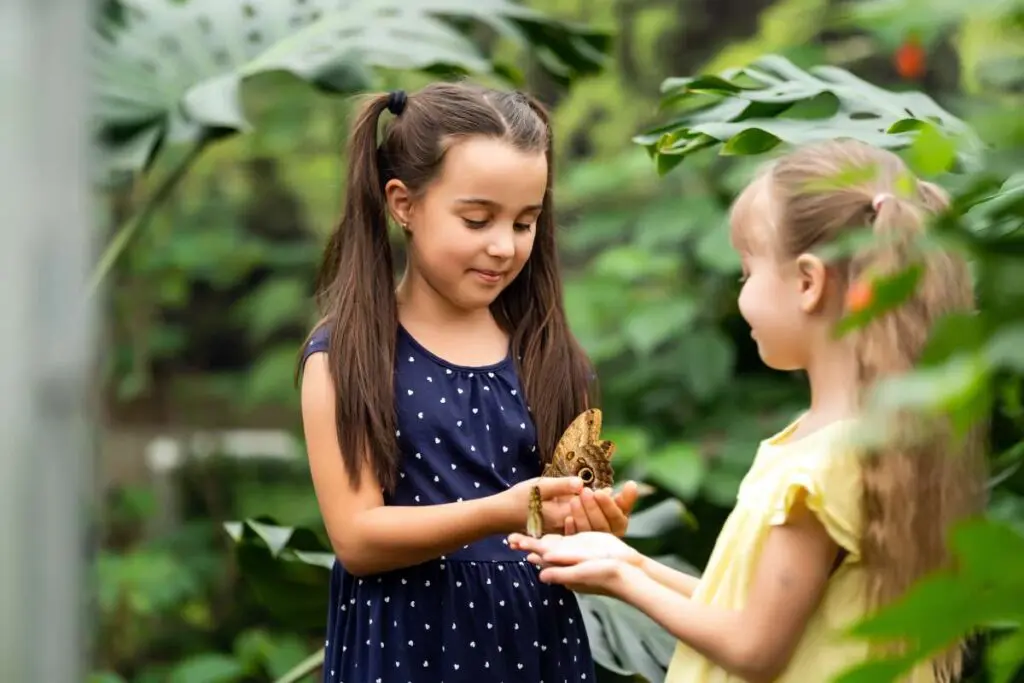Does the thought of another parent-teacher conference about your kid “not sitting still” make you want to scream into a pillow? You’re not alone. Traditional schools can feel like more of a pressure cooker for young children than a place for real learning. Rigid schedules, endless worksheets, and a one-size-fits-all approach has many parents saying, “Forget the fluorescent lights, we’re going outside in the sun.”
Forest schools are ditching desks for dirt and standardized tests for hands-on exploration. Instead of rote learned facts for pop quizzes, kids climb trees, track animal prints, and learn math in nature. Could be the shake-up that your child’s education needs?
What is Forest Schooling?
Imagine a school where kids spend their days building forts, identifying plants, and learning survival skills instead of staring at a whiteboard or an ipad for hours. That’s forest schooling in a nutshell. But this isn’t a new-age, hippie experiment– forest school has deep roots and is backed by decades of research. Started in the 1950s in the Scandinavian region, where outdoor education was valued as an essential part of learning, this philosophy believes in play-based, hands-on learning that follows the child’s curiosity.
No two forest schools look the same, their core principles are based in the following ideas:
- Classes are held outdoors, come rain, shine, or snow. Kids learn to adapt to bad weather instead of avoiding it, building resilience and self-sufficiency.
- Teachers are guides not lecturers who seek to spark curiosity and facilitate learning.
- Subjects are woven into real world experiences. Math, for example, isn’t simply equations on a page– it’s measuring tree heights and tracking animal prints. Science is studying ecosystems firsthand, and language arts might involve storytelling around a campfire.
Of course, hybrid models exist, where children split time between traditional classrooms and outdoor learning, blending the best of both worlds. It’s a far cry from rigid curriculums and endless standardized testing. And for many parents, that’s exactly the point.
Why Parents are Making the Shift
Between the lack of personal attention in packed classrooms, rigid schedules and hours at a desk, many kids are feeling burned out before middle school. Parents are noticing and looking for alternatives to both educate and nurture their child. That’s exactly why forest schooling is catching on.

Holistic Child Development
Forest schooling seeks to develop the whole child, from physical health to emotional resilience and problem solving. Instead of hours indoors, kids move constantly– climbing, running, balancing– improving their motor skills, coordination, and overall fitness. Time outdoors also promotes a healthy immune response in children, reducing the frequency of common colds, reports The Times.
This type of learning also facilitates cognitive growth. Kids naturally develop problem-solving skills, spatial awareness, and critical thinking by exploring and experimenting with their environment. Instead of encouraging rote learning, children learn by doing, which leads to deeper understanding and long term retention. The Canadian Psychological Association also shows that time in nature supports feelings of calmness and helps to manage attention challenges and self-regulation.
A Response to Traditional Schooling Concerns
Parents frustrated with the one-size-fits-all approach of traditional education are looking for something that actually meets their child’s needs. Forest schooling allows kids to learn at their own pace, driven by their curiosity rather than a seat-in-stone curriculum. It removes the high-stress of standardised testing, replacing it with experiences that build intrinsic motivation.
Beyond stress management, Attention Restoration Therapy (ART) suggests that time outdoors replenishes cognitive resources, allowing kids to concentrate better and absorb information more effectively. Our shortened attention spans and reliance on tech can profoundly affect cognition, which is why so many find it helpful to boost brain power with natural compounds like the potent 7 Wonders adaptogenic mushroom blend.
Aligning with Holistic Wellness and Sustainability
Forest schooling aligns with a broader shift towards holistic living. More parents are prioritising organic food and healthy, sustainable choices, not just for themselves but for their whole family and community. A nature-based education fits seamlessly into this lifestyle, reinforcing values of environmental stewardship, health sovereignty, and mindful living.
Counteracting the Technological Overload
Screens have taken over childhood, replacing outdoor play with endless mindless scrolling and binge-watching. This excess of screen time has been linked to shortened attention spans, challenges in cognitive development, and socially inept children and adults, leaving parents anxious for a way to break the cycle. Rather than zoning out in front of a screen watching nature documentaries in science class, children in forest schools experience nature firsthand. Free from digital distractions, they can build creativity, focus, and resilience– skills that no app or online lesson could teach.

Does it Even Work?
Forest schooling may sound like an idyllic alternative to traditional education, but it’s not without its challenges. For many families, the question isn’t just whether forest schooling is enriching—but whether it’s practical.
One of the biggest concerns is whether forest schools prepare kids for traditional academic expectations. Because the focus is on exploration and experiential learning, structured subjects like math and literacy may not be emphasized in the same way, leaving students struggling with standardized tests or future transitions into traditional education. Some programs may integrate these core subjects more intentionally, but this varies widely by school.
Forest schools are also often private and expensive because unlike traditional public schools, they don’t receive government funding– making them accessible only for families with financial means. However, some public schools are starting to integrate outdoor education programs, offering hybrid models that blend nature-based learning with traditional academics. While these initiatives could help to bridge the gap eventually, affordability remains a significant barrier.
Lastly, outdoor learning sounds great until you consider harsh winters, heavy rains, or sweltering summers. While this may build resilience, it’s not always comfortable and this could be a cause for concern for many parents. Additionally, spending time in the wild comes with inherent risks: scraps, falls, insect bites, and encounters with wildlife. Safety protocols and risk management strategies are undoubtedly in place, but it is still important to consider how your child will react to the unpredictability of nature.
Could This be a New Path for Education?
Forest schooling is a very real and very needed response to an education system that often prioritizes memorization over real-world learning, and screens over tactile experiences. Immersing children in nature fosters independence, creativity, and resilience in a way that traditional classrooms fail to replicate. For many, it’s a refreshing alternative to the soul-sucking rigor of traditional academic environments. That said, concerns about academic readiness, accessibility, and safety are very real and very valid. Not every child thrives in an unstructured, outdoor environment and financial and logistical barriers make it an impractical choice for many.
At the very least, forest schooling challenges the way we think about education. Whether or not the right fit, its growing popularity highlights the demand for learning that nurtures curiosity, well-being, and adaptability.

